I met Jay through Twitter’s #writingcommunity where he’s an active and supportive member. With a busy and responsible job, and a big extended family, Jay has many demands on his time. Yet he still manages to carry out detailed research and write his historical fantasy Forerunner series – and create stunning works of art too. Let’s see how he does it.
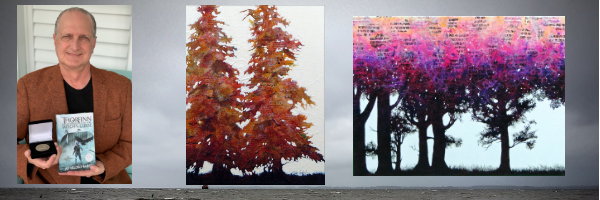
Tell us a little bit about your daily life
Living on the shore on the “Delmarva” peninsula in the mid-Atlantic of the United States, my name is Jay Veloso Batista, and I am a fulltime executive with a Canadian maritime domain intelligence company specializing in over-the-horizon radar and data analytics systems. My middle name is both a nod to my Portuguese heritage and to differentiate between myself and the world wrestling entertainer who appeared on the scene in the past decade! In addition to being a husband, father, and grandfather, I like to garden, and admit to a fondness for seafood, especially Chesapeake Bay blue crabs!
When not working and writing, I keep my inspiration flowing by painting: I have been creating acrylic collage works since the late 1990’s. My work is carried in two galleries in the US Midwest and is in private collections on three continents. Above, you can find two samples of my work.
What kind of writing do you do and what led you to that?
My first published work was in 1978, and over the years I have had work published by traditional publishing companies, technical journals and in 2019 I took the plunge and decided to publish independently. While my work spans poetry, fiction, and non-fiction, recently I have been focusing on a series of historical fantasy works, what is referred to as “low fantasy” with real historical references to balance the mythology and folk beliefs. Named the Forerunner Series, the novels take place in the Ninth Century with setting in the petty kingdoms of pre-England Britain, Ireland, Norway and the Holy Roman Empire.
I was drawn to this period for two reasons, archaeologist are discovering many historical sites and supplying solid information to fill the gaps in our understanding, and because the written records of the times are conflicting and contradictory, leaving lots of room for interpretation. In order to build a foundation for my work, I started with an online course taught by a university professor on The Vikings, twelve hours of lectures and a companion book—this helped me choose the years for my setting. In addition to other non-fiction works on Viking Age Europe, I read multiple mythology non-fiction texts like my well-thumbed ‘Bullfinch’s Mythology,’ and the Icelandic Sagas. Research was augmented with online searches, including Wikipedia sources, and I have found some doctoral thesis documents that informed my work, including a wonderful treatise on early medieval Scandinavian weddings.

I have also visited the Jorvik Viking Centre in York, UK and several Viking archaeological digs in Sweden and Denmark—I will admit to being partial to the standing stones of medieval and prehistoric Europe. For the historical references, I try to keep faithful to the most recent information the scholars have published.
I have learned a number of surprising facts as I prepared for my novels—that the concept of a “honey moon” referred to the month long, mead drinking celebration newlyweds were expected to share, and that the Vikings in Ireland were two separate groups that often warred amongst each other, the “light” and “dark” foreigners, or the Norwegians and Danes.
In the early days of writing, were there authors whom you consciously modelled yourself on?
I read Poul Andersson and Bernard Cornwall Viking Age historical fiction to understand how modern masters of the craft handled the realistic descriptions of the period—I think these books influenced my writing. As the stories are fantasy, I would say my strongest fantasy influences are Tolkien and GRR Martin and I have read Brandon Sanderson and Neil Gaiman to understand the modern fantasy genre.
How does writing begin for you? Is it an idea, a conversation, a title or an image?
Being visual, I often see a scene in my mind’s eye and then craft the story around making that vibrant scene viable and “bring it to life.” This means I need to do a bit of imaginative “staring off into space” before I can sit down and write the story—I used to travel frequently on business and would have plenty of time on cars, trains and automobiles to daydream.
What is the most essential aspect of the story? The characters, the settings, or the plot?
My series is a multiple point of view adventure novel which makes the intertwining plots of primary importance, followed by characterization, for if you don’t connect with the characters there will be no empathy. The first novel of the series really establishes a setting and everything is based on that initial foundation.
Are some characters more fun or more challenging for you to write?
I will admit writing a 14-year-old girl was the most difficult for me. I searched the internet on the subject of teenaged girls to understand what their key issues were, other than the obvious puberty and rebelling against parental restrictions. Interestingly, the idea of “mean girls” has been a difficulty for middle-grade aged girls for centuries, and I decided to adopt it in my recent work.
What is your most recent book about? What inspired this particular story?
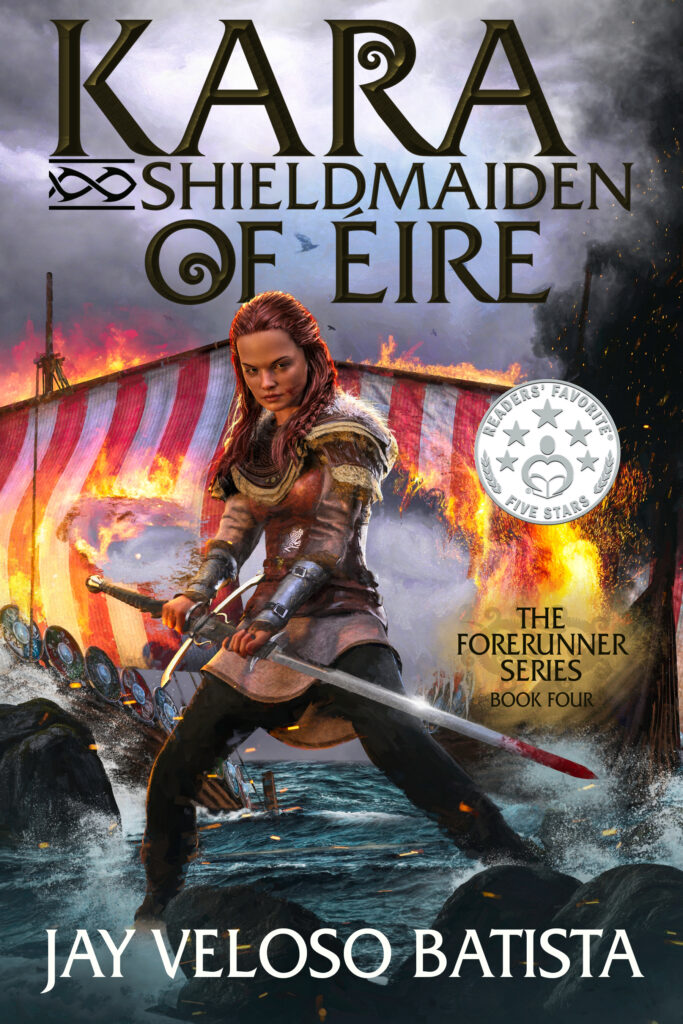
This month I will release Kara Shieldmaiden of Eire, the continuation of the Forerunner Series and its theme is “love” in all forms: puppy love, first love, unrequited love, love at first sight, love lost, and a few actual historical love stories from the late Ninth Century, including a murderous love triangle that ended in regicide.
It was also inspired by the great battle that first unified Norway, and the treacherous and seemingly continuous battles that swept 880 to 900 Ireland. There is also more fantasy elements in this tale as I move toward the fifth in the series which will be set across the nine Norse realms and be almost completely a fantasy novel. [Cheryl note: Read my review of Kara here, purchase link here]
Are you close to other writers and how does that help you?
For many decades I have successfully portrayed an extrovert in business and public while nursing my introverted nature—writing, painting, gardening, these are all solitary, private, contemplative affairs. While I belong to the Eastern Shore Writers Guild, there is not a local writers circle that I am aware of… I rely on social media and long-distance relationships with writer friends. Most of my writer friends are just as busy as I am and seldom have time to share but I enjoy corresponding with them. I have a trusted few who will weigh in on my synopsis before I begin writing, and the others are supportive. I really enjoy following a self-publishing group on twitter although I am afraid, I lurk more than contribute. They are a wonderful group of talented people spread around the English-speaking world.
What do you want your readers to feel when they have closed the last page of your book?
“What happens next!?!” LOL! I want the book to satisfactorily address the main challenges and leave the audience yearning for more.
What do you like to read yourself?
I agree with the idea that a writer needs to read everything and understand how it works, or doesn’t, to better their craft. I try to read everything—right now I am reading an independently published fantasy book and a non-fiction book about the state of politics in the USA called “Evil Geniuses.” In my cue are romance novels and cosy mysteries, a biography and a poetry book. I prefer witty word-play and succinct prose, although I am guilty of long-winded descriptions myself….
Writers draw constantly on their imaginations. How do you keep your well of creativity full?
I garden and paint—gardens take planning and meticulous care, and the type of painting I do allows for wild experimentation and multiple layers of colours, papers and shapes. The paintings also require long periods of “staring,” where I try to envision the negative shapes of trees in the chaos of the collage. When one is digging in the earth or tearing and placing papers in a gel medium, it is easy to daydream and forget about surface wave radar technology and marketing/sales goals.
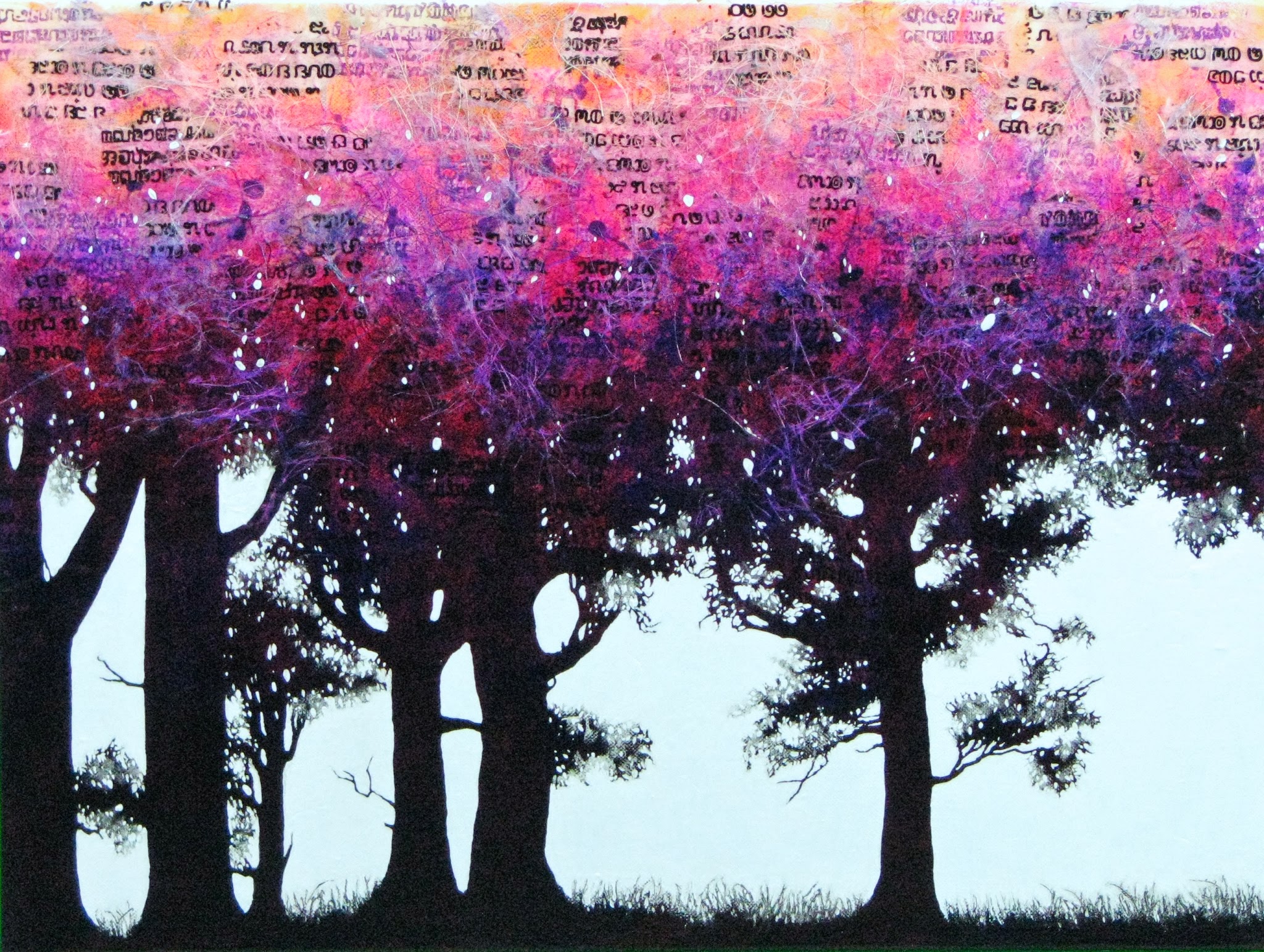
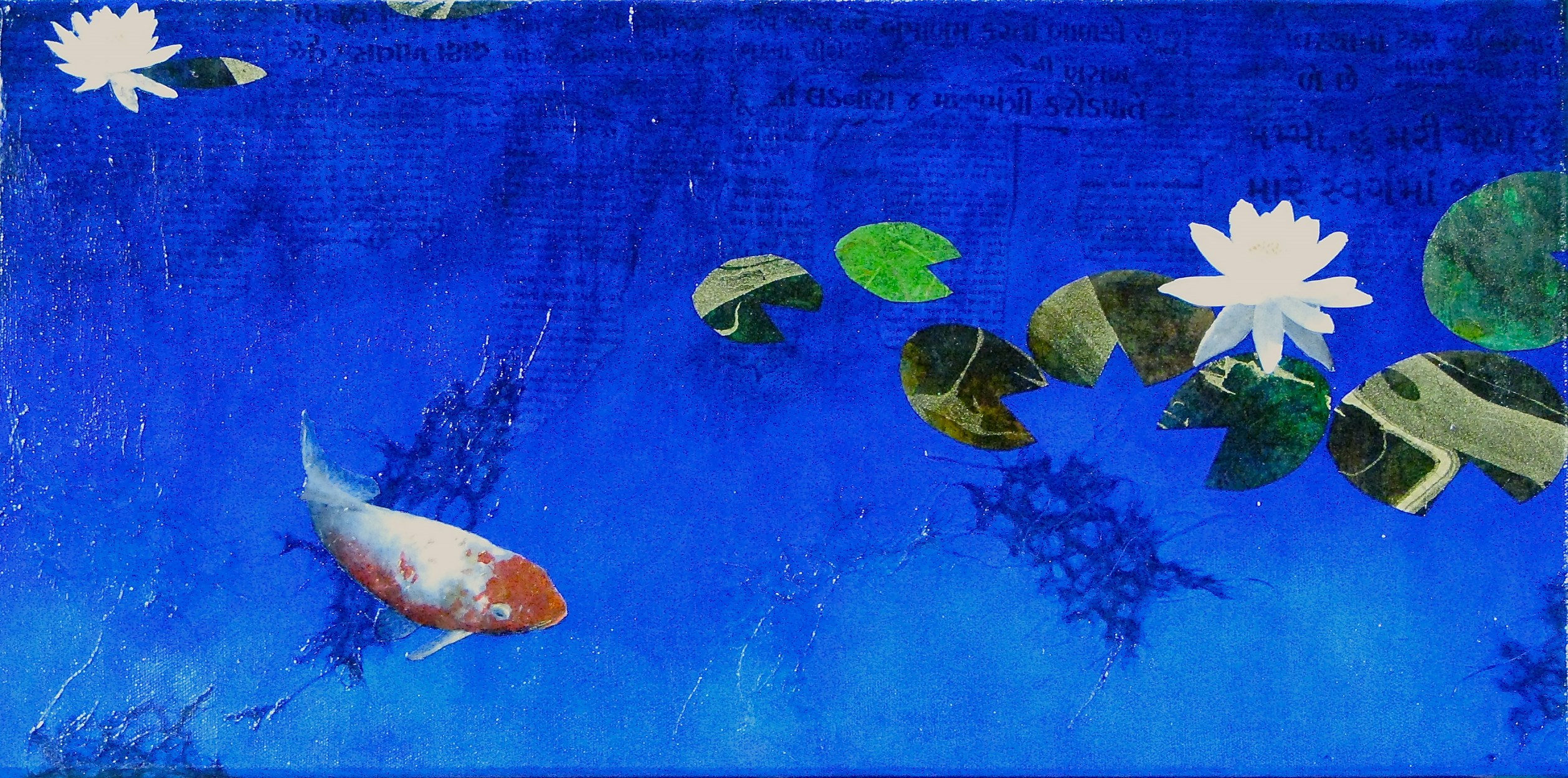
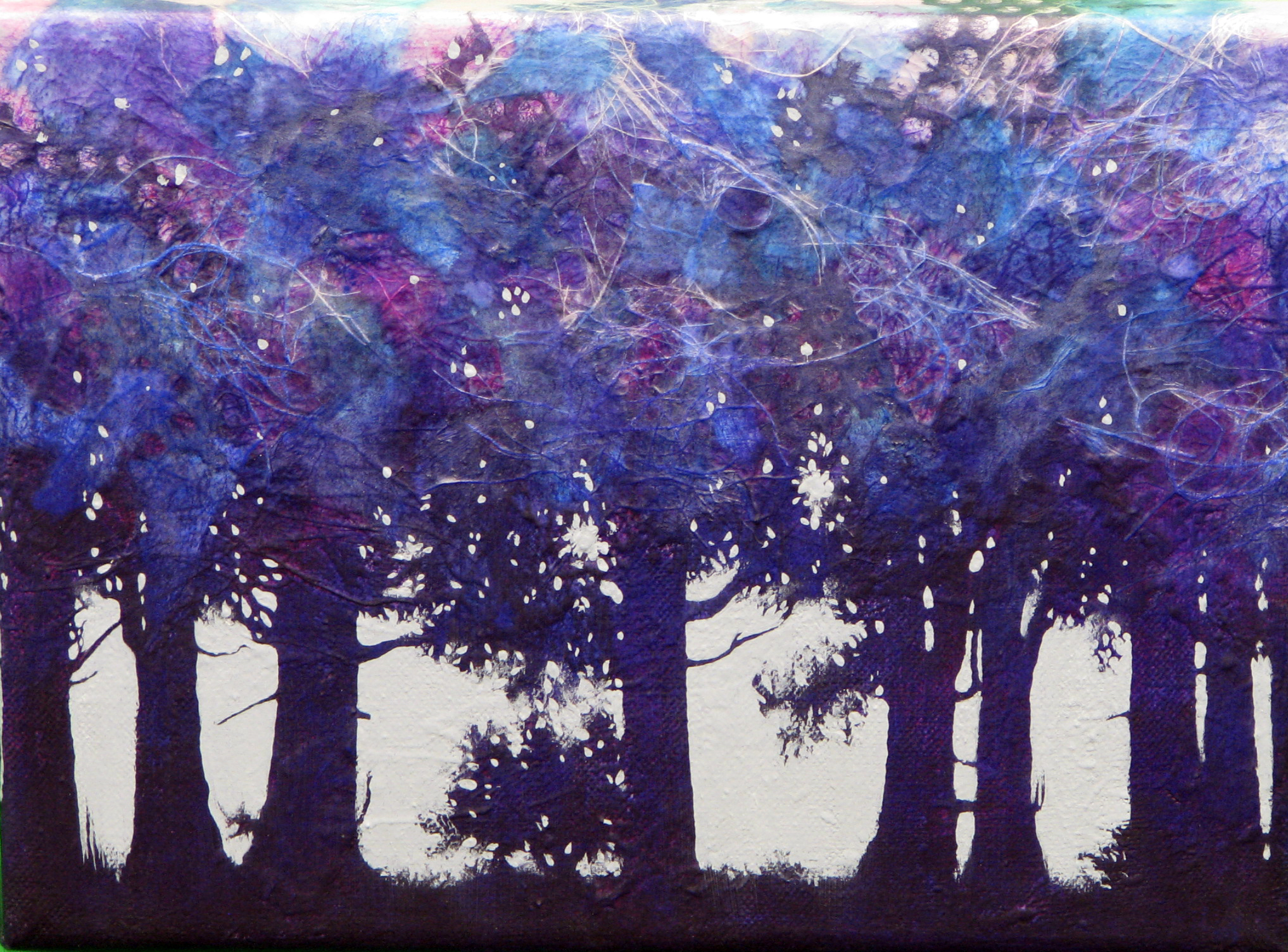
A small sample of Jay’s work
What’s your most thrilling writing experience
My most thrilling writing experiences were when I received my first 5-star, gushing review from a complete stranger, and when my book Thorfinn and the Witch’s Curse won two international book awards.
If you could tell your younger writer (no matter how recently that might be) anything, what would it be?
This is an easy question—I returned to writing in my spare time in 2019 when a neighbour pushed me to “get it off my bucket list,” referring to a story idea I had in mind for over 15 years. If I could tell my younger self anything, I would demand that I get started on the novels much sooner rather than waiting until I “had time.” There is never any time unless you make time.
What are your future writing plans and especially, when can we expect a new book from you?
There are two more books planned for my Viking Age historical fantasy series: ‘Marauders in Jotunheim’ planned for 2023, and ‘Voyage to Cordova’ planned for 2024. I have also been toying with a plot of a humorous story set on the mid-Atlantic coast of the US, kind of a ‘beach story’ with a little romance and lots of hijinks—these are popular here at the beach resorts for summer reading. And I have an outline of a straightforward historical novel set in 1765 about a local Chesapeake Bay pirate. My plan is to get the series completed by the year I retire and have more time to devote to my other projects.
You can find Jay and his books here
Website: www.jayvelosobatista.com
Facebook: http://www.facebook.com/jayvelosobatista/
Twitter: https://twitter.com/JayVBatista
Amazon author page: https://www.amazon.com/Jay-Veloso-Batista/e/B07TTT9Y2Z
The Forerunner series
Read more author interviews here – and get to meet new authors in my monthly newsletter, sign up here!